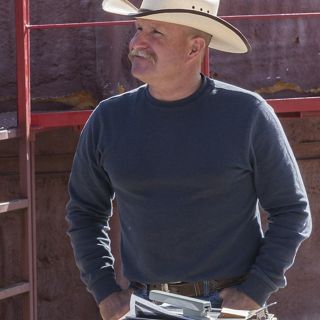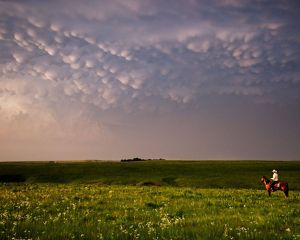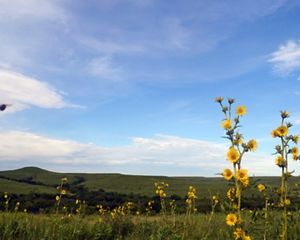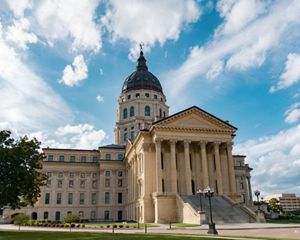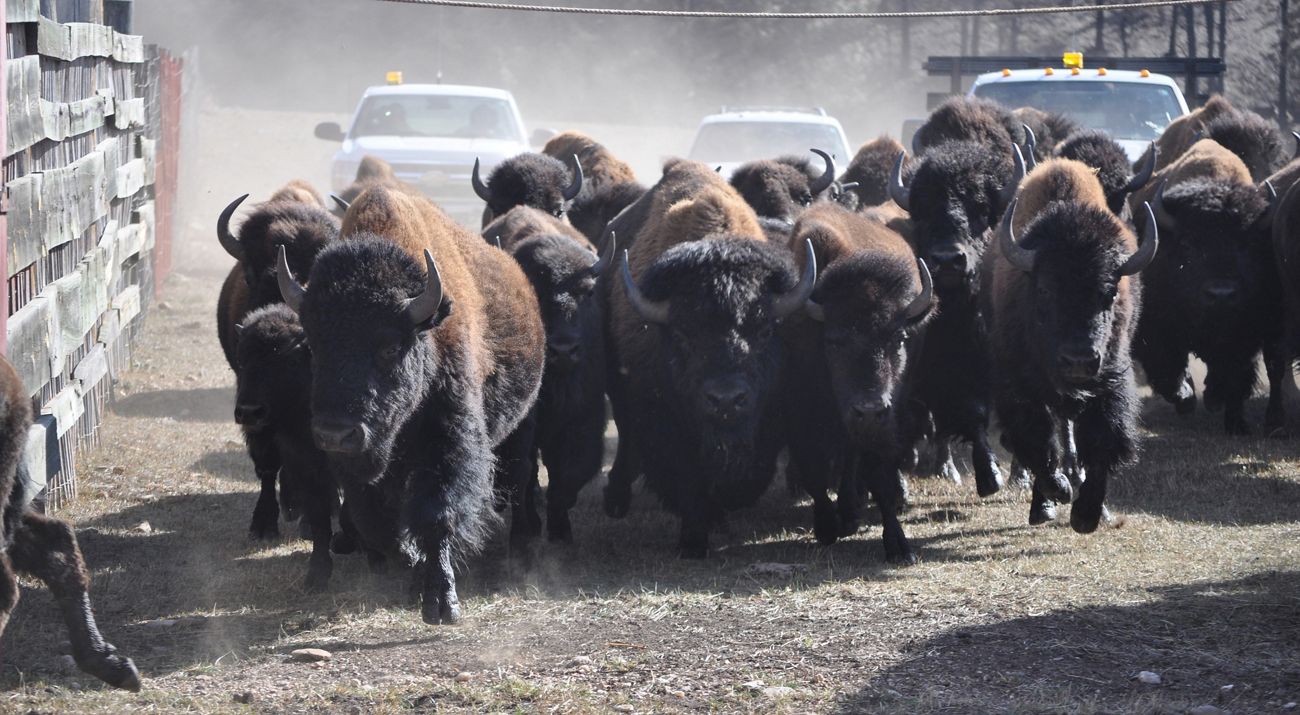
Alan Oborny met his first bison in 1989 and developed a bond. He says when he released that first one onto his family farm in Rush County he knew they were special. He spent the next three decades raising them, first at home, then for a large commercial enterprise and now for The Nature Conservancy in Kansas. Stationed at Smoky Valley Ranch in Logan County, Alan is also responsible for the well–being of bison herds in Chase and Riley counties.
So he knew that the bison at Wind Cave National Park are one of only two public herds that haven’t been blended with cattle. (The other herd is at Yellowstone National Park, but the presence of a bacterial disease called brucellosis prevents them from being shipped to most other locations.) All modern testing shows they are as “pure” as they get when it comes to our national mammal.
Vanishing Genes
Concerned that the relatively small size of the national park—not to mention what might happen if disaster struck this singular population—was putting these genetics at risk, the National Park Service began to establish what they called “satellite herds” on land owned by TNC. One of the first was in Kansas at Tallgrass Prairie National Preserve. That herd is going strong at 100 head of bison and is a popular tourist attraction.
And when the National Park Service asked TNC to expand satellite herd size at some locations and establish new conservation herds at others, Alan jumped at the chance to bring these special bison to Smoky Valley Ranch before the day was through. The ultimate goal is to have a total population of at least 1,000 breeding bison of Wind Cave lineage—a number considered the minimum to maintain the genetic diversity of the animals well into the future. Before these bison could head south for Kansas, they had to go through one extra step—a quick sample was taken from their tail hair. Having samples of the bisons’ tail hairs allows researchers to analyze the animal’s genetic makeup, so that we can ensure there’s good diversity at each of TNC's herds.
Support Our Work
Donate To KansasHome on the Range
So in the fall of 2018, Alan escorted the small herd of yearling and 2-year-old bison from South Dakota to Kansas, to make their new home at Smoky Valley Ranch. According to Alan, the expansion of corrals, building of additional fence and juggling of logistics for interstate animal travel was all worth it. “These animals are the megafauna of this landscape. The land and bison evolved together over thousands of years. They were here long before we were and hopefully they will be long after.”
The ranch is slated to receive additional animals in 2019 and 2021. Under the agreement with the Park Service, TNC is also funding scientific research toward the long-term preservation of bison.

Find More Places We Protect
The Nature Conservancy owns nearly 1,500 preserves covering more than 2.5 million acres across all 50 states. These lands protect wildlife and natural systems, serve as living laboratories for innovative science and connect people to the natural world.
